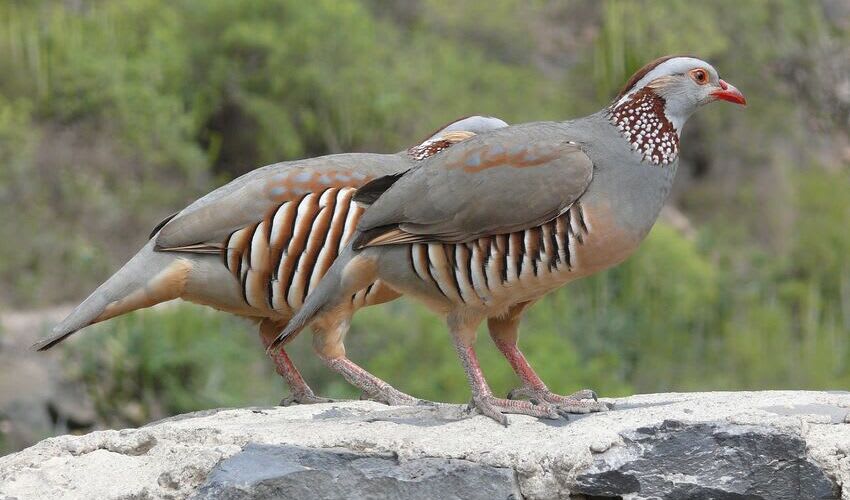Alectoris – Rock partridges
Popular gamebirds with round bodies and small heads have exceptionally sharp wings to aid during long flights
Rock partridges are adapted to live in rugged terrain, including hilly, dry, and open areas. Their non-migratory nature means they have a strong fidelity to their chosen habitat, primarily across the mountain ranges of Europe, North Africa, and parts of Asia.
The physical appearance of rock partridges is robust and plump, a characteristic shape accentuated by their specialized flank coverts. Their grey-black plumage is often intricately patterned, providing excellent camouflage against their habitat’s rocky outcrops and sparse vegetation. This plumage serves as protection from predators and plays a role in their social signaling and mating rituals.
One of the most distinctive features of rock partridges is their well-developed red legs, equipped with spurs. These spurs are particularly prominent in males and are used in territorial disputes and during the breeding season to establish dominance. The presence of these spurs is a testament to the competitive nature of these birds during mating.
Rock partridges construct their nests on the ground, making simple depressions that line with twigs, leaves, and other available materials. The female is responsible for laying and incubating the eggs and takes great care to conceal the nest to protect it from predators. The precocial nature of the chicks means that they are born with their eyes open and are covered in down, ready to leave the nest shortly after hatching.
In terms of diet, rock partridges are omnivores. They typically feed on various seeds, a major part of their diet, along with vegetation such as leaves and shoots. They are also known to eat ants and other small insects, which provide essential protein, especially for the growing chicks.
Some species of rock partridges have been introduced worldwide for game hunting due to their challenging flight and difficult terrain, making them a prized target for sport hunters. However, their introduction outside their native range can sometimes have negative ecological impacts, and such practices are often carefully regulated.
Species in this genus
Chukar partridge
The national bird of Pakistan and Iraq is known to improve degraded ecosystems by aiding in the dispersal and germination of seeds


